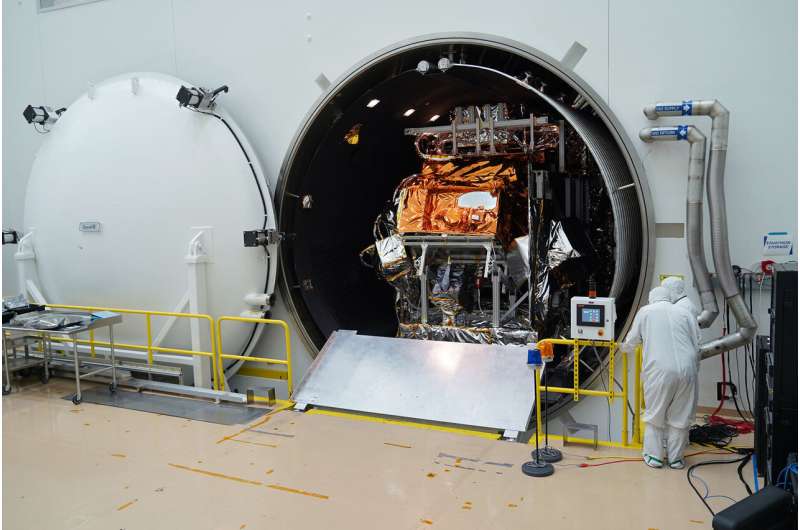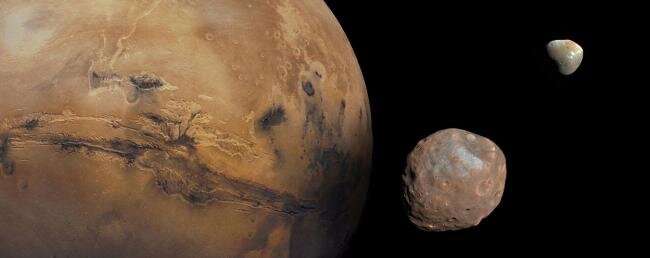
Copernical Team
China's deep space exploration laboratory starts operation
 China's deep space exploration laboratory has started operations, the China National Space Administration (CNSA) said Tuesday.
Co-established by the CNSA, Anhui Province and the University of Science and Technology of China, the laboratory is headquartered in Hefei, capital city of Anhui.
It has completed various preparatory work and entered a new stage of substantial operation and c
China's deep space exploration laboratory has started operations, the China National Space Administration (CNSA) said Tuesday.
Co-established by the CNSA, Anhui Province and the University of Science and Technology of China, the laboratory is headquartered in Hefei, capital city of Anhui.
It has completed various preparatory work and entered a new stage of substantial operation and c Northrop Grumman runs Laser Communication Demonstration for Tranche 1 constellation
 Northrop Grumman Corporation has announced the successful ground demonstration of a secure networked laser communications system for proliferated-LEO constellations supporting the U.S. military.
Performed for SDA leadership, the demonstration validated compatibility between commercially developed laser communication and secure U.S. government encryption hardware, providing a baseline for N
Northrop Grumman Corporation has announced the successful ground demonstration of a secure networked laser communications system for proliferated-LEO constellations supporting the U.S. military.
Performed for SDA leadership, the demonstration validated compatibility between commercially developed laser communication and secure U.S. government encryption hardware, providing a baseline for N Airbus built MEASAT-3d communications satellite ready for launch
 The Airbus built MEASAT-3d telecommunications satellite is in Kourou, French Guiana and is ready for its launch on an Ariane 5 on 22 June 2022.
MEASAT-3d is the 57th E3000 satellite built by Airbus and will be positioned at the 91.5E orbital slot and collocated with MEASAT-3b, also built by Airbus.
This new satellite will significantly enhance broadband speeds of up to 100 Mbps in ar
The Airbus built MEASAT-3d telecommunications satellite is in Kourou, French Guiana and is ready for its launch on an Ariane 5 on 22 June 2022.
MEASAT-3d is the 57th E3000 satellite built by Airbus and will be positioned at the 91.5E orbital slot and collocated with MEASAT-3b, also built by Airbus.
This new satellite will significantly enhance broadband speeds of up to 100 Mbps in ar SCEYE HAPS ascends to stratosphere demonstrates ability to stay over area of operation
 Sceye, a manufacturer of High-Altitude Platform Stations (HAPS), announced that it reached the stratosphere with the aim of demonstrating the ability to stay over an area of operation for months at a time using renewable energy sources.
The milestone test launch, which is using patented solar and battery power, puts Sceye on track to expand internet access to remote populations, monitor gr
Sceye, a manufacturer of High-Altitude Platform Stations (HAPS), announced that it reached the stratosphere with the aim of demonstrating the ability to stay over an area of operation for months at a time using renewable energy sources.
The milestone test launch, which is using patented solar and battery power, puts Sceye on track to expand internet access to remote populations, monitor gr Week in images: 13-17 June 2022

Week in images: 13-17 June 2022
Discover our week through the lens
Earth from Space: Glacier Bay, Alaska

Part of the Glacier Bay National Park and Preserve, which lies along the coast of southeast Alaska, is featured in this image captured by the Copernicus Sentinel-2 mission.
NASA completes critical testing milestone for NOAA's JPSS-2 satellite

The Joint Polar Satellite System-2 satellite, or JPSS-2, has cleared a critical testing milestone, bringing it a step closer to launch. Last week, the National Oceanic and Atmospheric Administration's polar-orbiting satellite emerged from the chamber after completing its thermal vacuum testing. This test is meant to show that the spacecraft and all of its instruments will perform successfully when exposed to the harsh environments of space.
"I can absolutely say with 100% certainty that the observatory is working great," said JPSS Flight Project Manager Andre Dress at NASA's Goddard Space Flight Center in Greenbelt, Maryland. "All the instruments are performing great, and we're going to meet all our requirements—and then some."
JPSS-2, the third satellite in the Joint Polar Satellite System series, will provide data that improves weather forecasts and advance our understanding of extreme weather and climate change.
Mars as a base for asteroid exploration and mining

Mining the asteroids for resources like iron, precious metals, water, or other valuable species may someday become profitable. Mining will probably starting with near Earth objects (NEOs), asteroids whose paths cross the Earth's orbital path.
Webb set to begin science operations
 NASA is scheduled to release the first images taken by the James Webb Space Telescope on July 12, 2022. They'll mark the beginning of the next era in astronomy as Webb - the largest space telescope ever built - begins collecting scientific data that will help answer questions about the earliest moments of the universe and allow astronomers to study exoplanets in greater detail than ever before.
NASA is scheduled to release the first images taken by the James Webb Space Telescope on July 12, 2022. They'll mark the beginning of the next era in astronomy as Webb - the largest space telescope ever built - begins collecting scientific data that will help answer questions about the earliest moments of the universe and allow astronomers to study exoplanets in greater detail than ever before. NASA's Chandra catches pulsar in X-ray speed trap
 A young pulsar is blazing through the Milky Way at a speed of over a million miles per hour. This stellar speedster, witnessed by NASA's Chandra X-ray Observatory, is one of the fastest objects of its kind ever seen. This result teaches astronomers more about how some of the bigger stars end their lives.
Pulsars are rapidly spinning neutron stars that are formed when some massive stars run
A young pulsar is blazing through the Milky Way at a speed of over a million miles per hour. This stellar speedster, witnessed by NASA's Chandra X-ray Observatory, is one of the fastest objects of its kind ever seen. This result teaches astronomers more about how some of the bigger stars end their lives.
Pulsars are rapidly spinning neutron stars that are formed when some massive stars run 